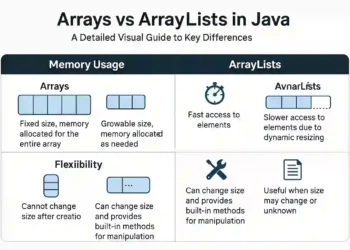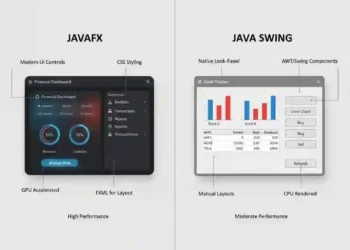How to use the StackPane JavaFX
StackPane JavaFX lays out its children in a stack of nodes. From the word “stack” when adding nodes to a StackPane layout, the added nodes will be stacked or in pile form. StackPane is a powerful layout. It can overlay nodes. When creating an application, you can use StackPane to overlay nodes if you are creative.
The preferred width of a StackPane is based on the widest child node, and the preferred height is based on the tallest child node. A StackPane resizes its resizable children to fill its content area, provided their maximum size allows them to expand beyond their preferred size.
Creating objects of JavaFX StackPane
You can create the StackPane layout with or without nods or children. The StackPane class provides constructors to create objects.
// Create an empty StackPane
StackPane stackPane = new StackPane();
// Create a StackPane with nodes
StackPane stackPane2 = new StackPane(RectangleBuilder.create().width(200).height(50).fill(Color.LAVENDER).build(), new Text("A rectangle"));

You can use the getChildren() method to add nodes to StackPane. Adding nodes in a specific order is important to achieve your desired output. Nodes are drawn in the order they exist in the list. The following example below does not have the same result, and you need to be aware that if you are working with StackPane.
// Overlay a text on a rectangle stackPane.getChildren().addAll(rect, text); // Overlay a rectangle on a text stackPane.getChildren().addAll(text, rect);
StackPane Properties
The StackPane has an alignment property. The alignment property is used to align the children within the content area of the StackPane. The default value is set to Pos.CENTER means that all children or nodes are aligned in the center of the content area of the StackPane. To set the alignment property, proceed to the example given below.
// set the StackPane alignment stackPane.setAlignment(Pos.TOP_LEFT);






















